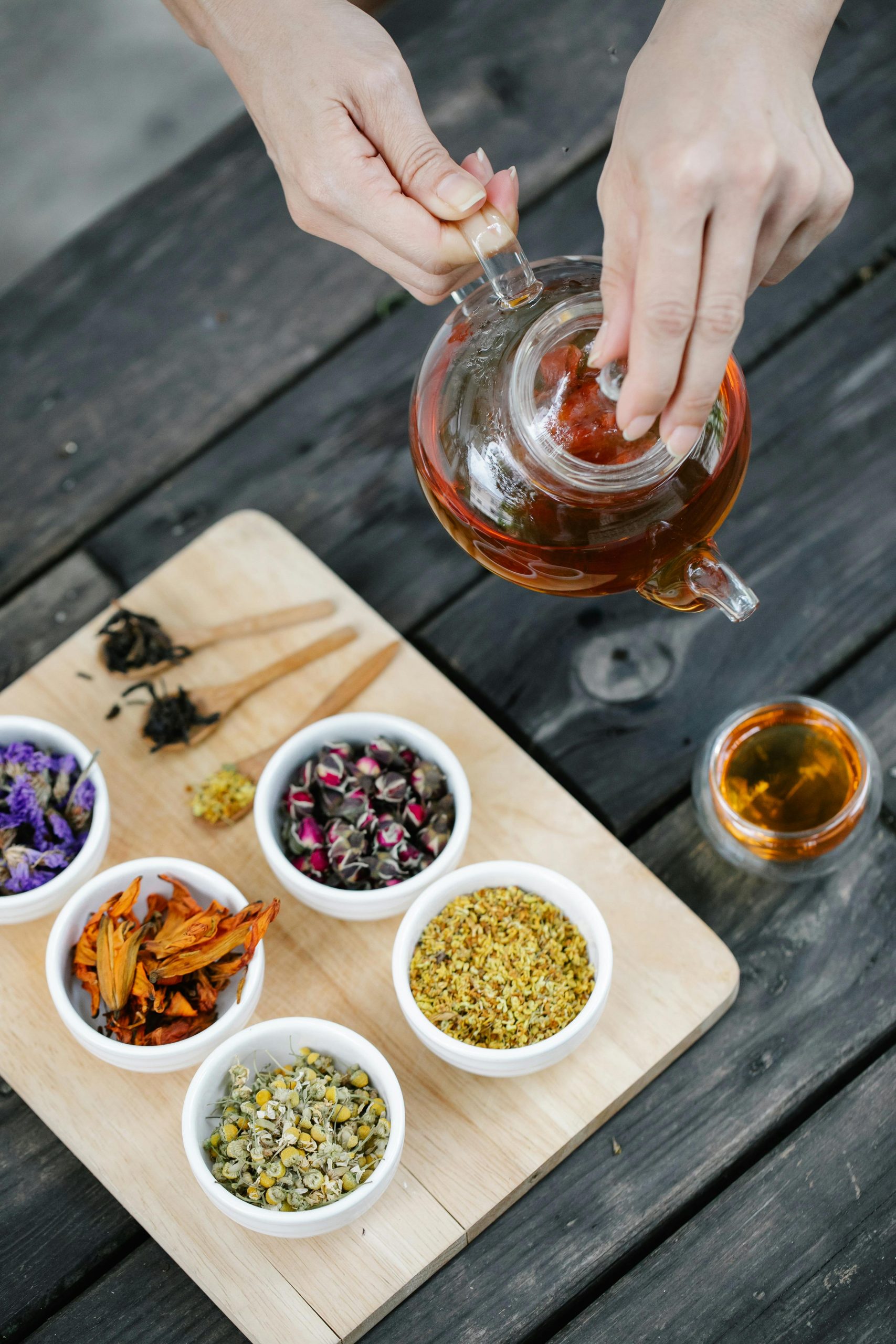No backyard? No problem. You don’t need a sprawling garden to enjoy the soothing ritual of a freshly brewed herbal tea. With just a sunny windowsill, a few small pots, and some easy-to-grow herbs, you can create your very own tea garden – right inside your home.
As summer approaches, now is the perfect time to refresh your home with greenery that gives back. Beyond their pretty looks and fragrance, home-grown herbs offer endless blends and wellness benefits, all within arm’s reach.
Read more: How to set up your garden for a tea party
Choose your tea heroes
When choosing herbs for your windowsill tea garden, think flavour, fragrance, and easy maintenance. Since space is limited, pick varieties that thrive together under the same light and watering conditions.
Here are some tea garden essentials to get started:
Lemon Balm: If you grow just one herb, let it be this one. Lemon balm has a lovely citrus aroma, is naturally calming, and grows quickly in bright, moist soil. It pairs beautifully with mint for a refreshing afternoon tea.
Mint: A tea garden classic. Mint’s fresh, cooling flavour is ideal after meals and great for blending. Keep it in its own pot though — it loves to spread!
Basil: Not just for pasta! Basil makes a surprisingly uplifting tea, especially when mixed with lemon or ginger. It loves warmth and sunshine and grows bushier the more you harvest it.
Chamomile: Famous for its soothing, sleep-friendly brew, chamomile also brightens up your windowsill with dainty white blooms. It thrives in bright light and well-drained soil.
Thyme: Known for its earthy, subtle notes, thyme brings depth to herbal blends. It’s low-maintenance and ideal for drier indoor conditions.
Planting your windowsill tea garden
Before you start, find a sunny spot in your home – a south- or southeast-facing window works best. Most tea herbs need at least six hours of bright light each day.
Containers: Choose small to medium pots with drainage holes. Terracotta or ceramic pots not only look beautiful but help regulate moisture.
Soil: Use a lightweight, well-draining potting mix. Herbs like lemon balm prefer slightly richer soil, while thyme does best in drier conditions.
Watering: Water in the morning and only when the top inch of soil feels dry. Avoid overwatering – most herbs prefer to be slightly dry rather than soggy.
Light: If your home doesn’t get much sun, consider using a small grow light to keep your herbs thriving.
Harvesting for fresh brews
Harvesting your herbs regularly encourages new growth and keeps your plants lush.
How to harvest: Use clean scissors and snip just above a leaf node (where two leaves meet the stem). Never remove more than one-third of the plant at a time.
Best time: Morning is ideal, when plants are hydrated and full of flavour.
Pro tip: For the best-tasting tea, pick young leaves from mint or lemon balm before they flower, and collect chamomile blooms once fully open.
Fresh or Dried?
You can brew herbs fresh or dry them for a stronger, longer-lasting flavour.
To dry your herbs, hang them in small bundles in a cool, well-ventilated area. Once crisp, store them in airtight jars away from sunlight. Dried herbs make a stronger tea, while fresh leaves offer a milder, more delicate flavour.
Try mixing both – add a few fresh sprigs to your dried tea base for a more layered aroma and a beautiful presentation when serving guests.
Common mistakes to avoid
Even the easiest tea gardens can face a few hiccups. Here’s how to keep yours thriving:
Don’t overcrowd: Give each herb its own space to grow – mint especially needs its own pot.
Avoid soggy roots: Always ensure your pots have drainage holes.
Mind the sunlight: Herbs grown in shade will become weak and lose their flavour.
Keep pruning: Regularly pinch basil and other fast growers to prevent flowering and keep the flavour strong.
Match plant needs: Pair herbs with similar watering habits together – for example, mint with lemon balm, and thyme with lavender.
Part of the joy of growing your own tea garden is the creativity it inspires. Mix and match your harvests – lemon balm with mint for a refreshing blend, or chamomile with thyme for a soothing bedtime cup.
Growing your own herbal tea garden doesn’t just make for a fragrant kitchen – it adds a touch of nature’s calm to your daily ritual. So, grab a pot, plant a few seeds, and watch your windowsill come to life – one brew at a time.
ALSO SEE: THE HEALING POWER OF SCELETIUM TEA
Image: Pexels

